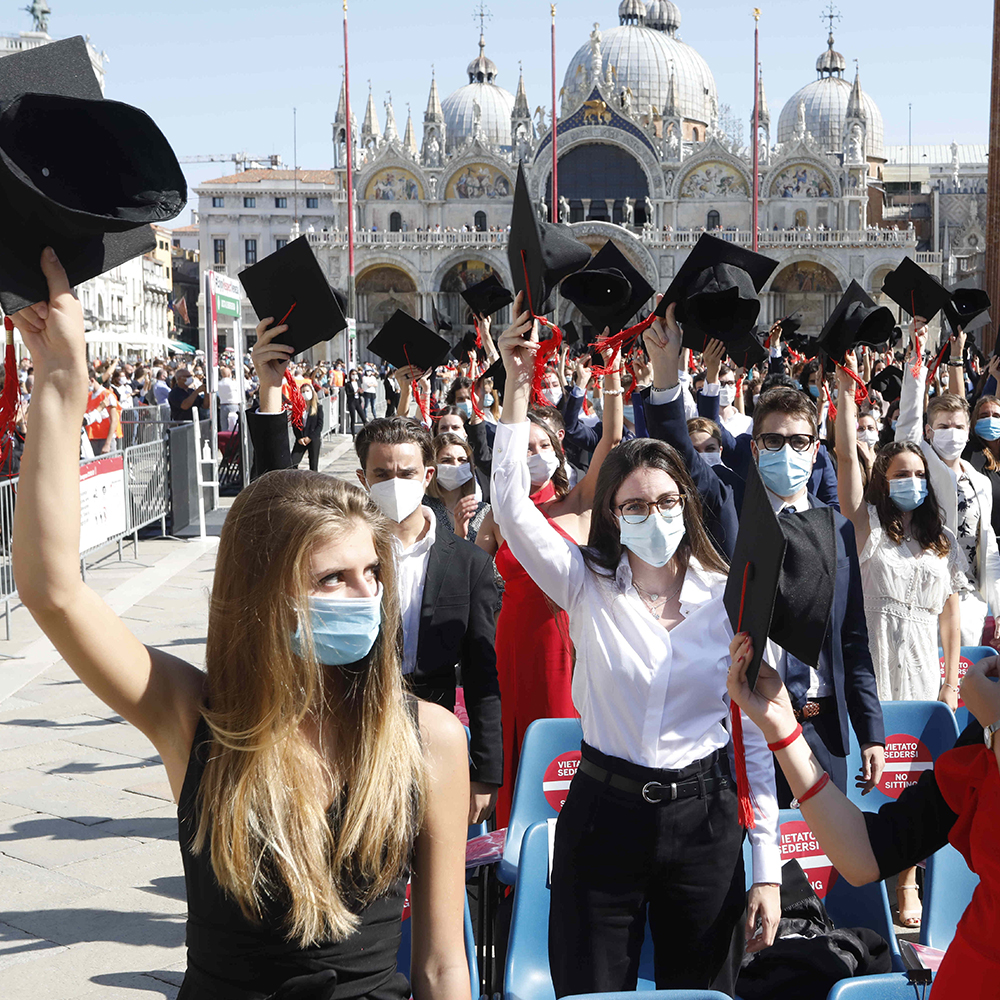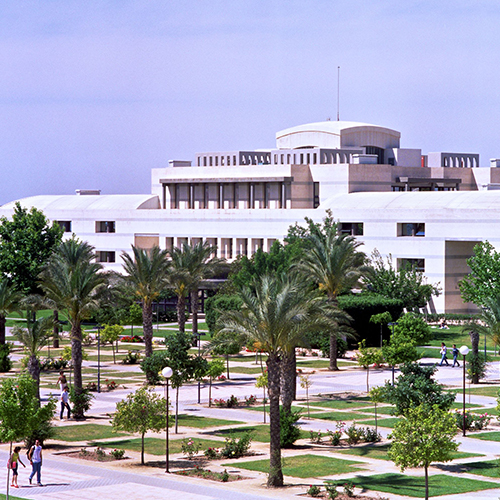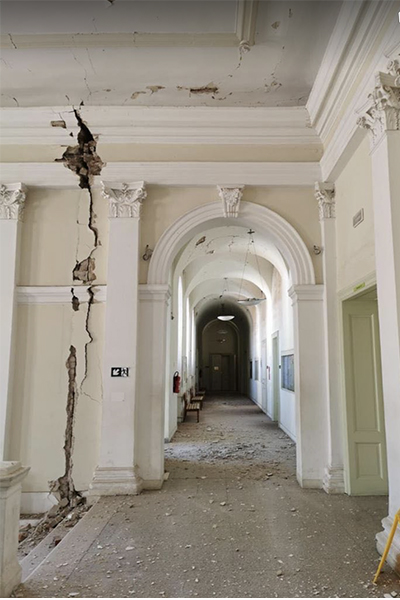
Switching suddenly to online delivery for everything from teaching to open days and graduation events proved daunting enough as the corona virus forced campus closures, but for the University of Zagreb it was a double whammy as the city was hit by a huge earthquake in March causing large-scale disruption.
Several university buildings were seriously damaged and management were just moving to online teaching as a hybrid model during reconstruction work when the corona virus swept across Europe, recalls Sandra Kramar, the university’s head of public relations and Croatia’s representative on the EUPRIO Steering Committee.
Today combining virtual classrooms with some face-to-face teaching – if spacing allows – is all part of the ‘new normal’ for European higher education, but the return of hundreds of thousands of students to campuses hasn’t gone without a few major hitches this autumn!

Computer crashes
Despite escaping the worst of the corona virus cases in Spain, the University of Alicante suffered a number of major computer crashes on the first day of the new academic year as it began teaching using a dual system combining face-to-face with virtual classes.
“The consequent bewilderment and anger of students and teachers led to protests through various means and social networks and quickly reached the media to echo the problem,” said Virginia Aceituno Casanova, who is responsible for the university’s international, social and cultural communications.
“After an emergency meeting of the University of Alicante board of directors, the technical problems of the system were corrected and the rector met with the student council to agree modifications to the dual teaching application and agreed to more spaces so that students do not have to leave the campus when they have an online session between scheduled face-to-face classes,” explained Virginia.
Students in self-isolation
The start of the new academic year in the United Kingdom saw a reported 9,000 cases of the corona virus across 113 of the country’s higher education institutions by Wednesday 15 October – and numbers are rising sharply – with over 1,000 confirmed cases at some universities in northern England.
Most outbreaks of COVID-19 have been blamed on socialising among first-year students and thousands of freshers are confined to self-isolation for 14 days in university halls of residence and privately rented accommodation and not allowed to attend face-to-face classes which are being delivered online.
John Cavani, director of marketing and external relations at Cardiff Metropolitan University in Wales, said: “Despite having relatively few cases compared to other UK universities, the demand for information, both internally and externally, is relentless and we have adopted a transparent approach to internal comms and provide daily updates to staff and students on new cases.”
Most of the negative media coverage is not about the disruption to the students’ education, but how quarantined students are being looked after by their universities. Some institutions were accused of providing parcels of junk food to students confined to their rooms at more than double the price in local supermarkets and there are concerns about students suffering mental health problems.
John said the Cardiff Met accommodation section had gone out of its way to ensure catered students who are self-isolating receive breakfast and dinner delivered to their front door while self-catering students receive “free food parcels specific to dietary needs”.
Doing the right thing

His message: “The key to good communications is doing the right thing. Our response to the virus has been to prioritise health and wellbeing above all else.” Cardiff Met also appeared ahead of the game by setting up its Covid-19 Business Continuity Planning Group back in January 2020.
Some UK universities seem to have handled the public fallout better than others and one mother even tweeted her thanks after her daughter had to self-isolate at Nottingham Trent University in one of English COVID-19 hotspot cities.
Déjà vu
For the University of Lodz in Poland, which we featured in an earlier EUPRIO blog on Communications in a Covid crisis, back on 5 May, spokesman Paweł Śpiechowicz said the rapidly changing situation facing universities has a sense of déjà vu.
“We had a few dozen cases of the corona virus on campus last semester, when around 700 mostly international students lived in dorms under quarantine during the height of the first wave of the pandemic.
“Our students, both Polish and international, adapted really well to those hard conditions. They were really brave, mature and patient and it is why we feel calm should we need to quarantine again in our dorms,” said Pawel.
And that might be as well, as it was announced by Polish authorities on 15 October that Lodz was moving into ‘red zone’ for fighting COVID-19 and that all classes will be on-line except for lab-work.
The University had already put back the start of the new academic year by two weeks to 19 October.

Regular updates
A common thread across all those I talked to for this blog was the need for regular updates to the whole university community about the rapidly changing picture concerning COVID-19 and the measures governments and health authorities are putting in place to try to slow the spread of the virus, particularly among young people.
Utrecht University in the Netherlands is among the many with a clear ‘Information Coronavirus’ web page, complete with checklists and regular newsletter-type updates from its executive board written in a chatty-style in both the national language and English.
Kjell Carli, communication strategist at KTH Royal Institute of Technology in Stockholm and Sweden’s national representative on the EUPRIO Steering Committee, said: “On a central level our communication has been technically very simple, focused on the web and occasional mass emails, and it has worked well.
“We are very careful in designing our messages and I think they have been clear and easy to understand. It has never been necessary to correct any messages. But managers and teachers have to refine these messages to colleagues and students and address their concerns with Covid. That can be hard sometimes!”
Digital investment pays off
Early investment in new tech equipment and training also appears to paying off for a number of universities I contacted, with Enrico Costa, media relations co-ordinator at the Università Ca’ Foscari Venezia, saying they had installed equipment in every classroom to allow professors to teach in dual mode, face-to-face and via Zoom, as the need arises.
Recordings of lessons are available for students for 7 days and students can book their places in classrooms via an app, so the university can “adjust the campus capacity in real time to guarantee safety,” said Enrico.
Facemasks and social distancing
Fewer cases of the virus appear to be related – so far – to classroom teaching, where it is easier to impose strict guidelines and hygiene measures and the number of students allowed to attend is limited to enable social distancing.

Even so, the Dutch authorities are among those now explicitly stating that facemasks must now be worn when moving around university buildings and where the one-and-a-half metre distance may be difficult, said Ludo Koks, public affairs manager at Utrecht University and national representative of the Netherlands on EUPRIO’s steering committee.
It seems universities that are spread all over the place rather than on one or two campus locations may be at an advantage at the moment, as their “spatial configuration” makes it easier “to organise lectures, seminars, practicums and exams at the individual level, or micro-level”, said Sandra Kramar.
Farida Khali, deputy head of communications at Université de Fribourg in Switzerland, agreed and said: “We are in the heart of the city. So, the whole city is our campus and we have been able to maintain face-to-face classes in small or split groups, which is very important to us.
“Our students live in shared or private flats and, so far, we have not had any massive cases clearly related to student social activities, although we have many commuters which also makes it difficult to track the origin of the infections.”
New challenges with exams
Despite fewer confirmed cases among students on campuses, universities in Norway are among those already switching exams to oral or digital format, said Ingvild Straume, head of external affairs at Oslo Metropolitan University, or Oslo Met, and chair of the university’s crisis communications team.
“Our biggest challenge is coordinating the information about teaching, practical training and the different forms of exams and tackling the gap between the students’ ongoing needs for security and answers and the time the institution needs to solve all the complex challenges as we enter the phase where we partially go back to campus despite COVID-19 still being around,” she said.
Christine Legrand, EUPRIO’s Acting President, said: “Once again our members and their colleagues in universities have shown that clear and transparent communications are the best way to help meet the rapidly changing challenges of ensuring the health and well-being of our students and staff while institutions find the most suitable blended methods to continue providing high-quality teaching and research activities during the pandemic.”
https://www.euprio.eu/communicating-in-a-covid-crisis/


